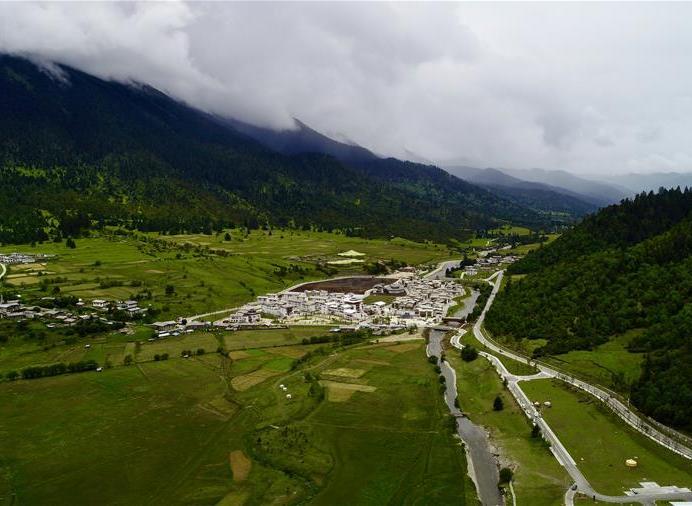Traditional carving techniques developed in to popular industry
Known as “hometown of carving”, Phursong Township in Nyemo County lies about 150 kilometers away from Lhasa, capital of southwest China’s Tibet Autonomous Region. Nyemo, which means “ear of wheat” in Tibetan, has three famous specialty: Tibetan incense, corrosion-proof Tibetan paper, and purely handmade Phursong carvings.
Phursong carving is an ancient skill passed down from generation to generation by the people of Phursong Township. In 2009, the Phursong carving technique was listed as an intangible cultural heritage of the Tibet Autonomous Region.
Over the years, carving artisans continue to enrich and develop this craft. The carving services were carried out for religious activities for the upper classes in Old Tibet and has now developed into popular tourism products. The content of carvings has also expanded from original religious images, ceremonies, and natural scenery to all aspects of social life.
Today, it is only in Phursong Township in Nyemo County that still preserves this ancient art in the whole Tibet.
The Phursong carving process involves 30 steps, from selection of the wood to production, carving, finishing, and finalizing, all done by hand.
The carving knives are also very particular. Each carver has his own set of knives, usually more than 20.
There are various forms of Phursong carvings, including text carving, pattern carving, and prayer flag printings. It is understood that prayer flags printed by Phursong Township account for 80 percent of the Lhasa market.
33-year-old carver Wangzha began learning to carve at the age of 10. He studied under two masters for six years. “When I first started studying, I was not used to it at all because the wood was too hard. I often got blisters on my hands,” Wangzha recalled.
Wangzha said that in the past, carvings could not make much money. But now a cooperative has been set up to innovate the carving art. Tourists are also willing to buy it, and their incomes are much better. In the off season, Wangzha carves from 8:00 am to 8:00 pm; he spends the day with the carving board in his right hand and the knife in his left hand.
In order to improve the inheritance and development of Phursong carving, Nyemo County has invested a lot of money and manpower in recent years, purchasing carving wood boards and prayer flag fabrics for farmers and herdsmen engaged in carving work in Phursong Township. They have also held skill-training classes to promote the development of the carving industry.
Tibet Stories

Yunnan Bai ethnic silversmiths "clanging" for more than 20 years in Tibet
At the foot of the mountain in Dokde Township, a suburb north of the ancient city of Lhasa, ...
Latest News
- Egypt uncovers intact 4,400-year-old pharaonic tomb near Giza pyramids
- UN climate conference adopts rulebook for implementing Paris deal
- Service of Chinese Americans in World War II to be formally recognized
- Germany suffers severe Santa shortage as Christmas draws near
- 7-year-old in good health, border agents said; then she died

